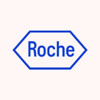
A Study Evaluating IL28B Polymorphism in Patients With HBeAg-Negative Chronic Hepatitis B Treated...
Hepatitis BChronicThis cross-sectional multicenter study will evaluate the IL28B polymorphism in patients with HBeAg-negative chronic hepatitis B treated with Pegasys (peginterferon alfa-2a) in the predecessor ML18253 study. The study consists of a single visit where eligible patients will undergo a blood test for IL28B genotyping, with a phone follow-up 7 days after the visit.

Efficiency of the Hepatitis B Sci-B-Vac Vaccine in HIV Positive Patients
HIVHBV vaccination is of paramount importance among HIV positive persons due to an increased risk of infection and disease progression. The most widely used ENGERIX B vaccine reaches a lower rate of vaccination (20-70%) among HIV positive vaccinees (compared to over 90% in the normal population). Sci-B-Vac is novel vaccine containing 3 antigens and is therefore more immunogenic (as opposed to one in ENGERIX B). Its use has been associated with higher and more rapid vaccination rates. Therefore, it has a theoretical advantage in HIV positive individuals.

An Open Study to Evaluate the Sustained Effect in Patients Showing Virological Responses With Muscle-related...
Chronic Hepatitis BAn Open Study to Evaluate the Sustained Effect in Patients Showing Virological Responses With Muscle-related Symptom of Chronic Hepatitis B Patients Who Received Clevudine.

Persistence, Adherence and Clinical Effectiveness of Entecavir in Chronic Hepatitis B Patients
Hepatitis BChronicThe purpose of this observational study is to measure the real-life persistence, adherence and clinical effectiveness of entecavir in patients with chronic Hepatitis B viral infection.

Observe Change of Endotoxaemia and Related Mediators in Patients With Chronic Hepatitis B Virus...
Hepatitis BChronicThis study was designed for changes in endotoxaemia, endotoxin-binding factors, sICAM-1 (soluble intracellular adhesion molecule-1), and cytokines during progression of chronic HBV infection. Patients with chronic HBV infection and healthy control are included. A limulus assay was used to measure plasma endotoxin level and ELISAs were used to measure the concentrations of interleukin-6 (IL-6), interleukin-10 (IL-10), tumor necrosis factor-α (TNFα), sICAM-1, and soluble CD14 (sCD14).

Activation of Hepatitis B Virus (HBV) in Hepatitis B Surface Antigen (HBsAg) - Negative But Hepatitis...
Hepatitis BIndividuals with resolved hepatitis B, characterized as hepatitis B surface antigen (HBsAg)-negative and hepatitis B core antibody-positive, have latent hepatitis B virus (HBV) infection in their liver tissue. Cytotoxic chemotherapy and hematopoietic stem cell transplantation sometimes trigger the reactivation of latently infected HBV, resulting in de novo hepatitis B. Although de novo hepatitis B could cause acute liver failure or chronic hepatitis, an effective management strategy for de novo hepatitis B has not been well established. Risk factors and effective management for de novo hepatitis B will be clarified.

Incidence of Hepatitis B Reactivation in Non-Hodgkin's Lymphoma Patients
Non-Hodgkin's LymphomaThis is a single-arm study. Key eligibility criteria include (1) newly diagnosed, diffuse large B-cell or follicular cell non-Hodgkin's lymphoma; (2) negative test for hepatitis B surface antigen (HBsAg) and positive for antibody to hepatitis B core antigen (anti-HBc); (3) adequate bone marrow, liver, and kidney function. All eligible patients will receive rituximab-CHOP (cyclophosphamide, doxorubicin, vincristine, prednisolone) chemotherapy according to current treatment guidelines. The primary endpoint of this study is the incidence of hepatitis B virus (HBV) reactivation, defined by a greater than 10-fold increase, compared with previous nadir levels, of HBV DNA during rituximab-CHOP chemotherapy and within 1 year after completion of the last course of rituximab-CHOP chemotherapy. Patients who have HBV reactivation during the study period will receive free entecavir treatment, one of the standard treatment for chronic hepatitis B, for 48 weeks. The secondary endpoints include the incidence of hepatitis flare, defined as a greater than 3 fold increase of serum alanine aminotransferase (ALT) level that exceeded 100 IU/L, and the efficacy and safety of rituximab-CHOP chemotherapy. In the T1408 study we enrolled patients with newly diagnosed lymphoma who were HBsAg (-) and anti-HBc (+) and were to receive rituximab-CHOP (cyclophosphamide, doxorubicin, vincristine, prednisolone)-based chemotherapy. Key findings of this study included (1) HBV reactivation, defined as a greater than 10-fold increase in HBV DNA compared with previous nadir levels, occurred to 10-20% of patients, depending on the sensitivity of the HBV DNA tests; (2) no HBV-related death with the prompt anti-viral therapy upon HBV reactivation; (3) patients with HBV reactivation were associated with poorer progression-free survival and overall survival; (4) serological breakthrough (i.e., re-appearance of HBsAg) is an important predictor of HBV-related hepatitis flare. In this amendment we will enroll more patients to clarify the above findings: (1) the association between HBV reactivation and survival; (2) diagnostic value of quantitative HBsAg and anti HBc tests on HBV reactivation; (3) whether host factors (DNA polymorphism) may help predict HBV reactivation. A larger patient cohort is needed to identify (1) baseline features that may help predict HBV reactivation, and (2) on-treatment features that may help timely anti-viral therapy.

Modified Dose and Schedule of Recombinant Hepatitis B Vaccination in HIV-infected Adult Subjects...
HIV InfectionThe purposes of this study include 1) to compare the seroconversion rate of an intensive standard-dose regimen (0, 1, 2 and 6 months) to a standard-dose regimen (0,1 and 6 months), and 2) to compare the seroconversion rate of an intensive double-dose regimen (40 μg at 0,1,2 and 6 months) to a standard-dose regimen (20 μg at 0,1 and 6 months) of HBV vaccine in HIV-infected adult patients.

Special Drug Use Investigation for ZEFIX (Lamivudine) Tablet (HBV Cirrhosis)
Hepatitis BChronicThe purpose of this study is to confirm efficacy and safety when administering lamivudine tablet alone in subjects with hepatitis B virus-induced liver cirrhosis.

A Phase IIIb: Long-Term Outcomes for Hepatitis B (HepB) Patients in Some Previous Entecavir (ETV)...
Hepatitis BThe purpose of this study is to follow patients treated in entecavir Phase III and rollover studies for safety experience and Hepatitis B virus (HBV)-related complications.
